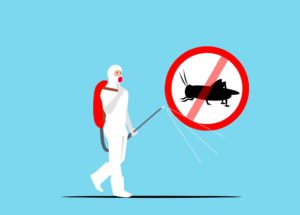You are in the right place if the term feeder roaches sparks curiosity or confusion! As a staple in many reptile diets, understanding and properly caring for these insects is crucial.
This blog will uncover the mysteries and break down the facts about feeder roaches. You’ll understand their pivotal function in your pet’s health and how to manage them efficiently.
So, strap in for an enlightening expedition into the fascinating world of roaches! After all, your journey to become a feeder roach aficionado starts here.
Why Feeder Roaches?
There are plenty of reasons why feeder roaches make an excellent dietary choice for your reptiles. They are a great source of protein, which is essential for your pet’s growth and development.
Roaches are hardy insects that can survive in various conditions. This means that even if your pet isn’t hungry immediately, the roaches will remain viable food sources for a while.
Roaches are adaptable. They can survive on a diet of fruits, vegetables, and pet food.
The Perfect Choice
Different feeder roaches are available, but one popular choice among reptile owners is dubia roaches. Dubia roaches are a tropical species from Central and South America.
They are known for their hardiness, ease of care, and fast breeding. They don’t climb smooth surfaces and are unlikely to infest your home. Also, dubia roaches are rich in protein, making them a nutritious food for your reptile pets.
Breeding Feeder Roaches
For pet owners, breeding feeder roaches at home can be a concern. However, breeding dubia roaches is a simple process.
Start by setting up a suitable habitat using a plastic container or terrarium with proper ventilation, substrate, and hiding places. Introduce a small number of roaches and provide them with enough food and water sources for breeding.
Although dubia roaches breed slowly, they produce large numbers of offspring once they start reproducing. Separate the baby roaches from the adults to prevent overpopulation.
Feeding Your Reptiles
Discoid roaches provide optimal nutrition for reptile pets. Before feeding, it is essential to gut-load and dust them with necessary supplements.
Gut-loading involves feeding roaches nutrient-rich food like fruits, vegetables, and specially formulated pet food to ensure their nutrition for your pet. Additionally, dusting roaches with calcium and vitamin supplements before feeding helps ensure your pets receive the necessary nutrients.
Safe Handling Practices
Some people may be apprehensive about handling feeder roaches. However, dubia roaches do not bite or fly and are generally considered safe to handle.
When handling them, using clean hands and avoiding squeezing or harming them is essential. Washing your hands thoroughly after handling the roaches is also crucial to prevent any potential bacteria transfer.
Purchasing Feeder Roaches
Feeder roaches can be purchased from pet stores and online retailers, or you can breed them at home. When buying feeder roaches, it is crucial to ensure they are healthy and free of any potential parasites.
Avoid purchasing roaches from questionable sources, as they may be contaminated with harmful substances or diseases. It is always best to buy from a reputable breeder or retailer.
Everything You Need To Know About Using Feeder Roaches
Roaches are an excellent, affordable, and nutritious option for feeding your reptile pals. They are easy to care for and provide numerous pet health benefits.
Now that you know everything about feeder roaches, it’s time to take the next step and incorporate them into your reptile’s diet. Give your pets the best and make the switch to feeder roaches today!
For more helpful tips, browse our blog regularly!





Be First to Comment